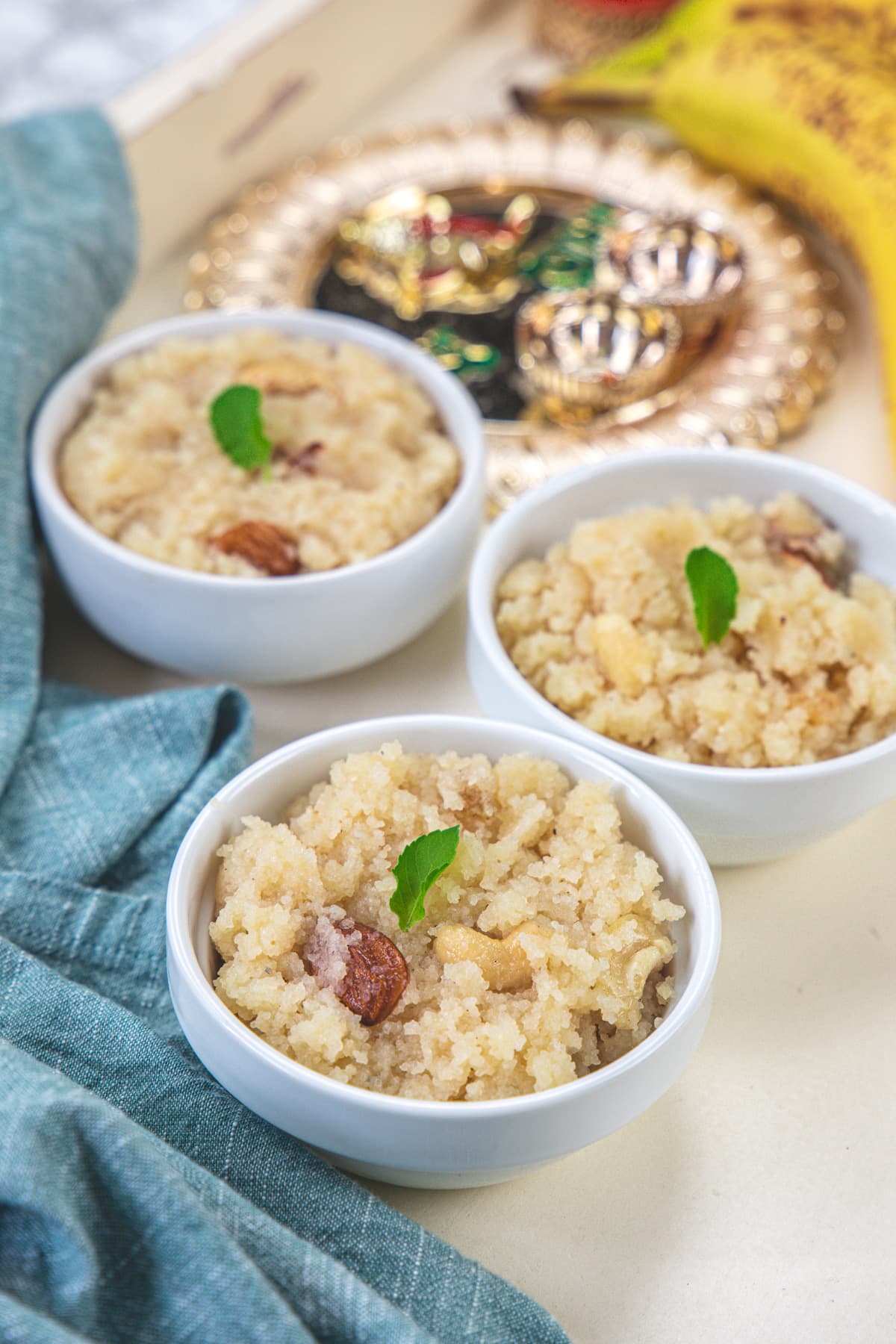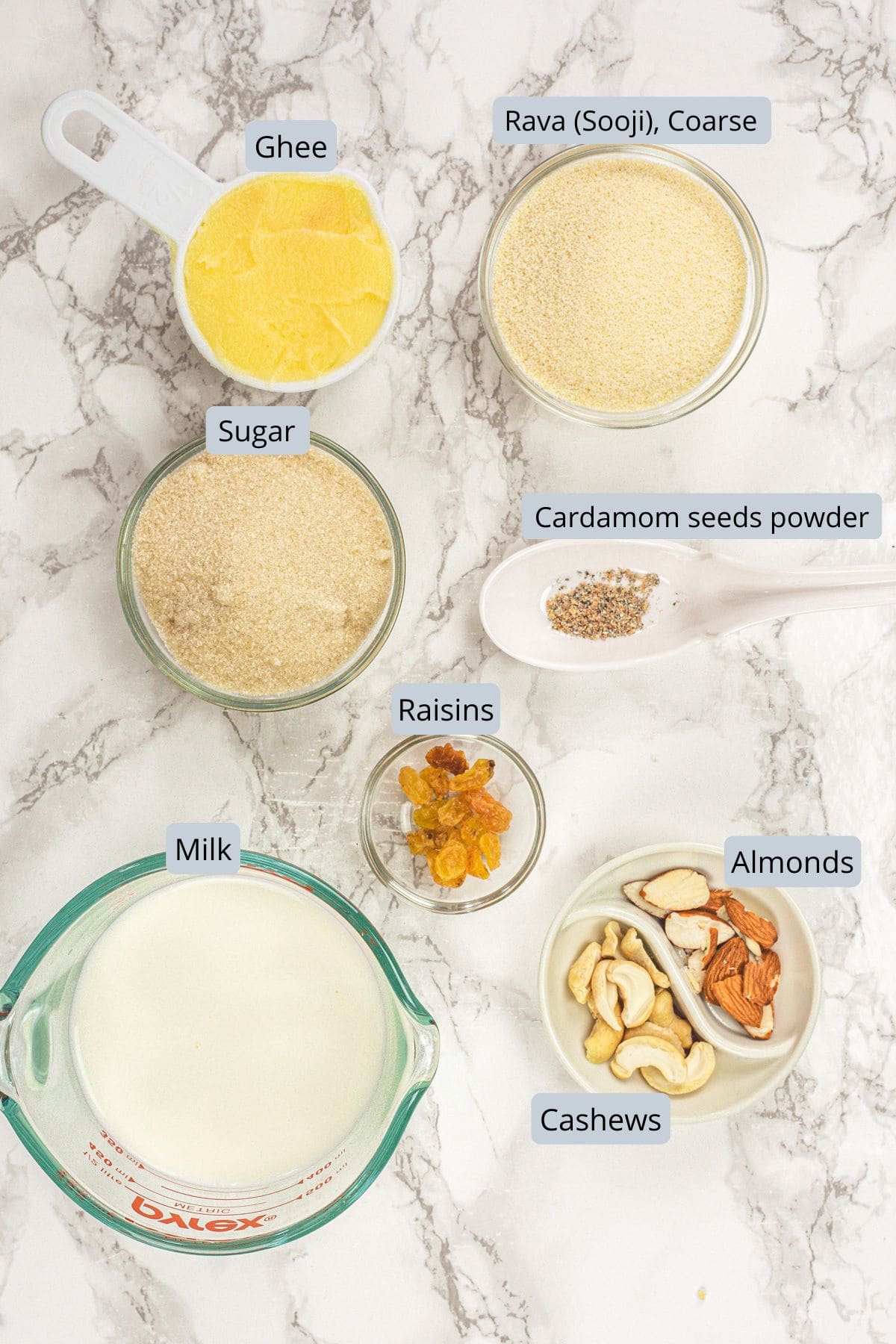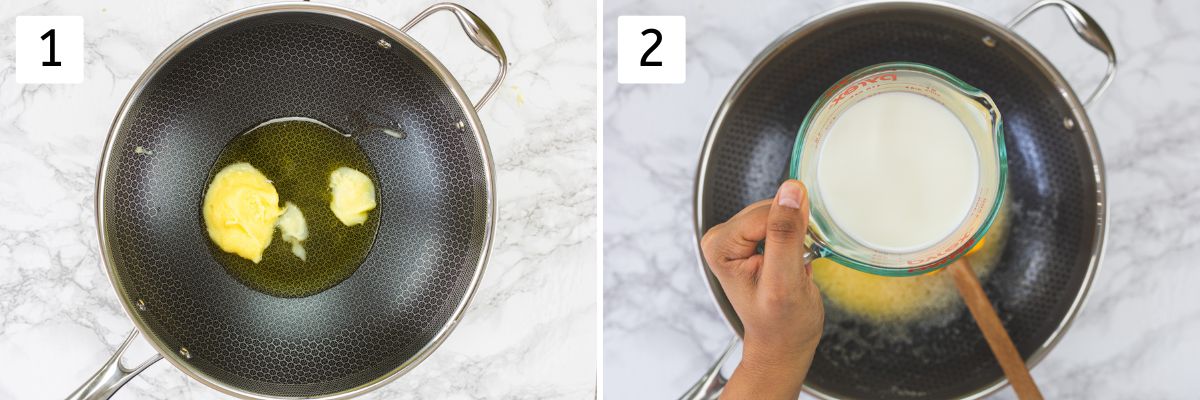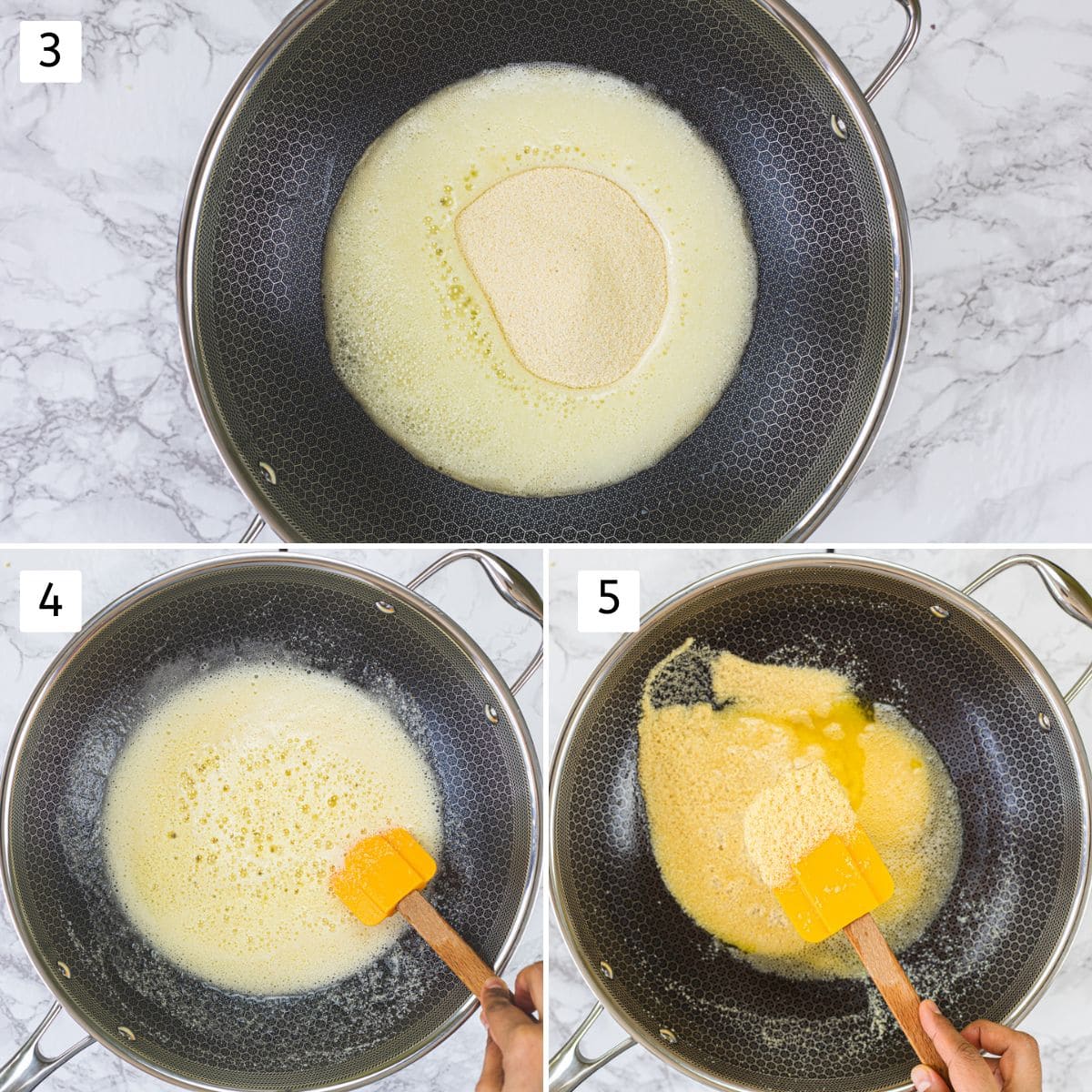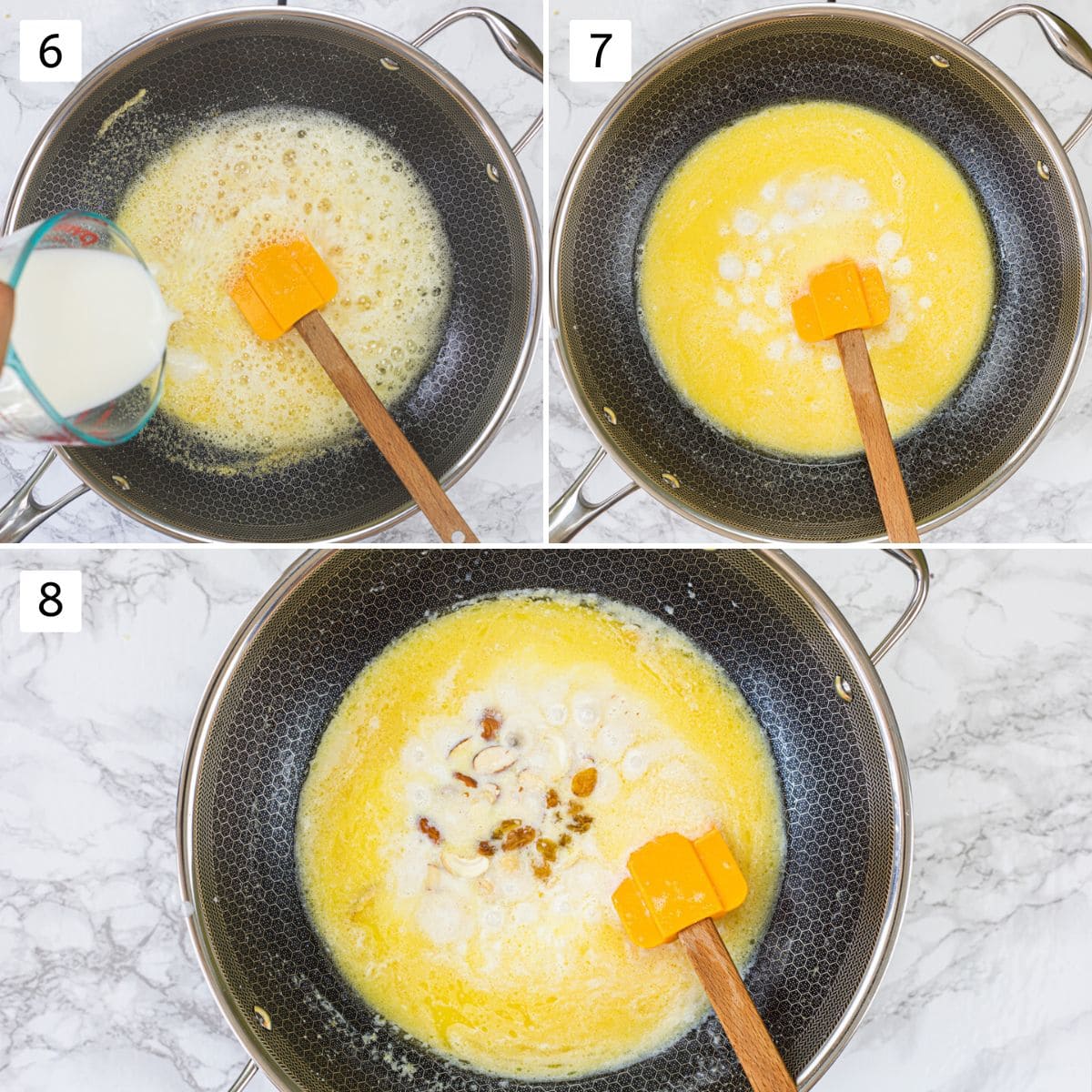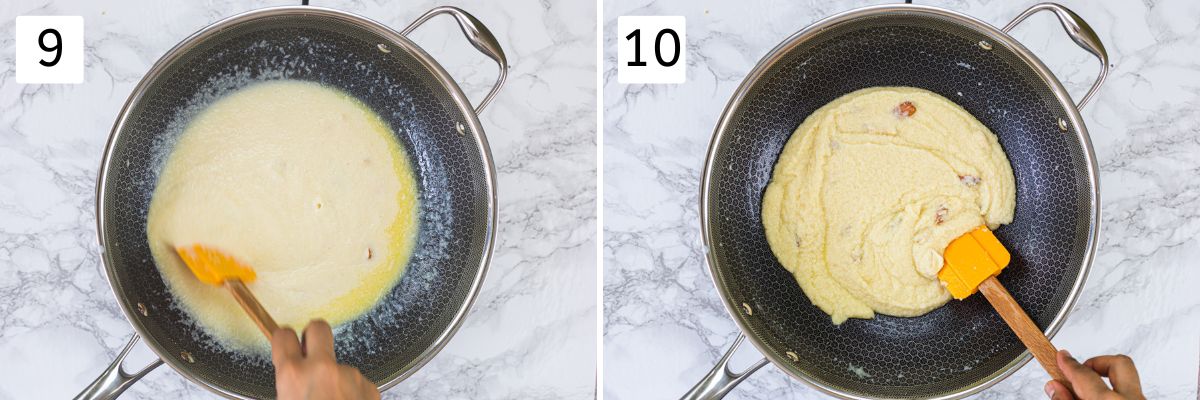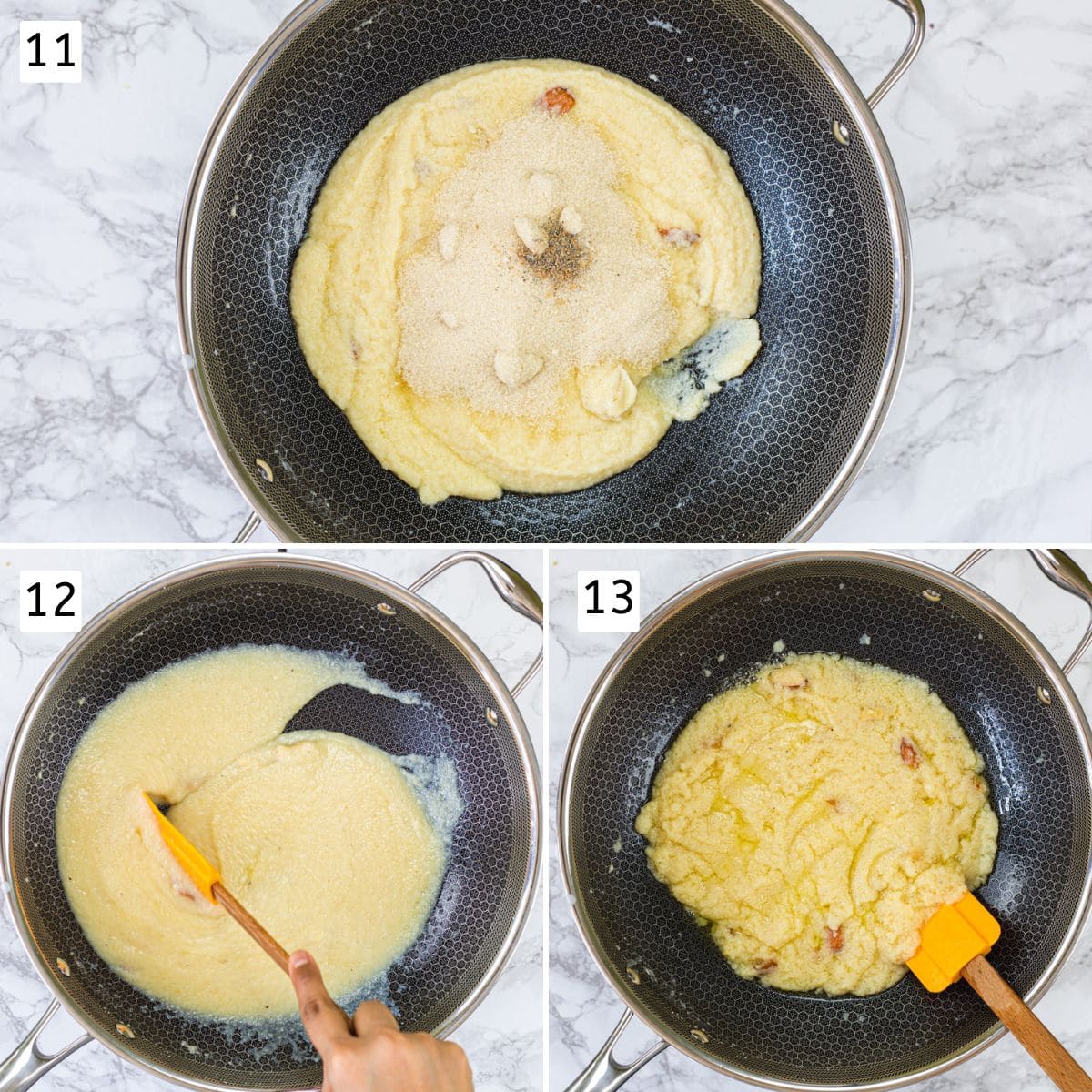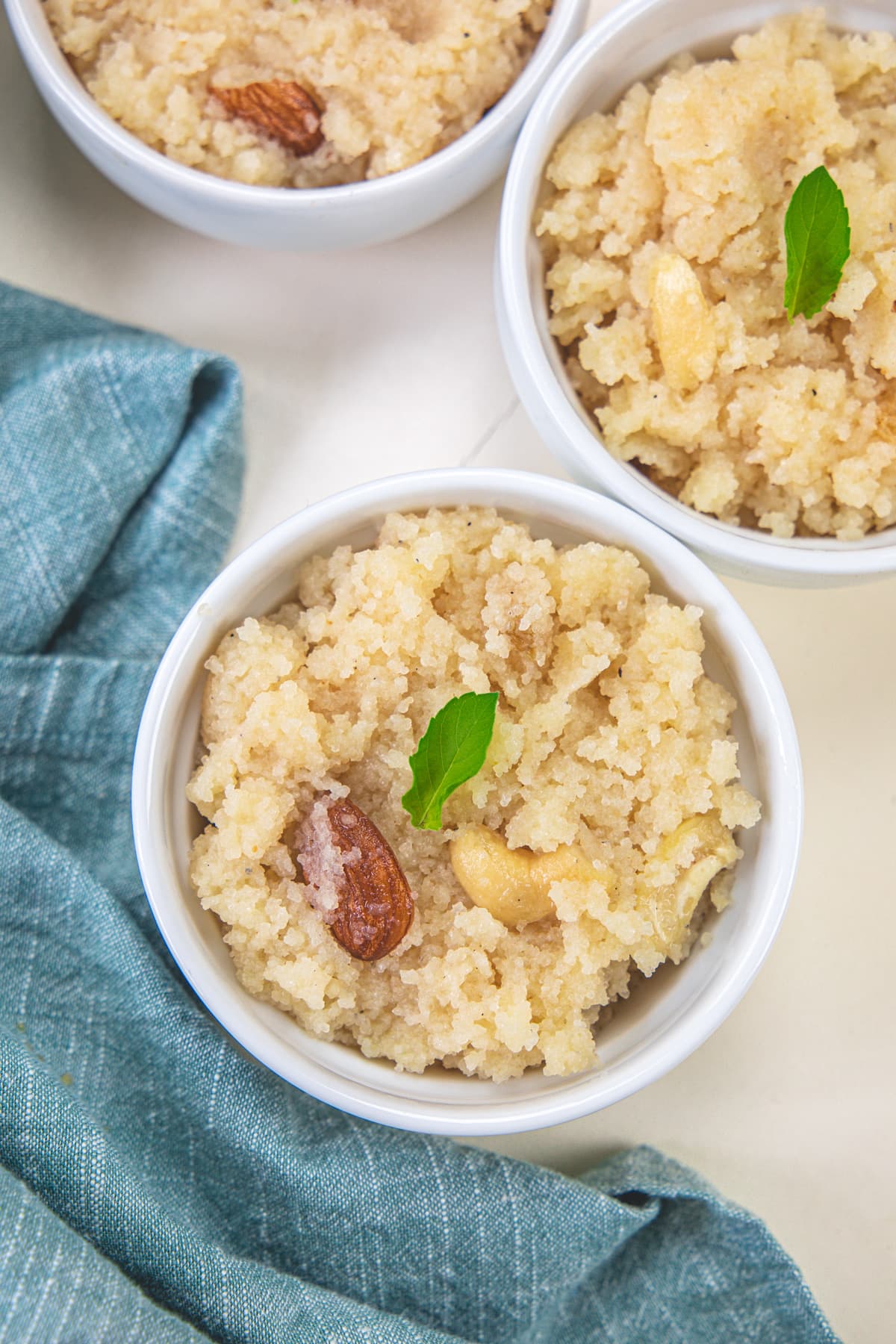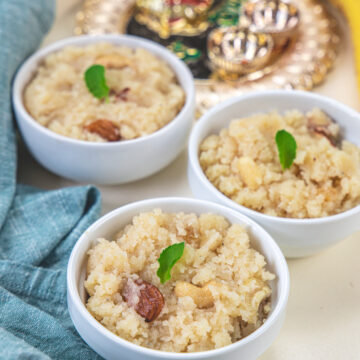The same sheera (garnished with tulsi leaves and served with sliced bananas and pomegranate arils) is made for Satyanarayan Katha (puja) as a prasad.
Satyanarayan Prasad Recipe
This sheera is offered to God as a prasadam while performing ‘Satyanarayan Katha’ or any other pooja like Devi pooja or Ganesh pooja. Elders in my house say that ‘Satyanarayan pooja is incomplete without sheera as a prasad. Basically, on pooja day, devotees keep fast for the whole day. After the pooja ends, it is distributed to devotees or followers and they break their fast by eating this. This sheera will give you an instant boost of energy, and lift your spirit after a day-long of fasting. When this sheera recipe is made as Satyanarayan Prasad sheera then it is garnished with tulsi leaves (holy basil). Some serve sliced or chopped bananas along with sheera while some add mash the banana to the sheera like this banana sheera recipe. Also, prasad sheera is garnished with pomegranate arils if those are in season. Not only on religious occasions but it is also made on a special occasions. I remember my mom making it on dad’s birthday. It is made as an accompaniment to the feast meal (for family or guests) on festivals like Diwali, Raksha Bandhan, Bhaidooj, and Holi.
❤️ You’ll Love This Sheera Recipe
Rava sheera requires only 4 main ingredients (plus a couple more for garnish & flavor). Sheera recipe gets ready in 20 minutes only (from prep to serve). You’ll just love its texture – Soft, smooth, and fluffy with the perfect amount of richness and sweetness. I know it is loaded with calories, but it’s ok we eat it occasionally. And it doesn’t taste right when made low-calorie by reducing the ghee amount. A big NO-NO. Kids and toddlers just love this. When my daughter was teething, I used to feed her this sheera as she doesn’t have to chew. Plus, it keeps her full and gets enough energy from ghee. Scalable: You can double, or triple the amount as needed.
🧾 Ingredient Notes For Rava Sheera
Here is a pic of the ingredients you’ll need to make the rava sheera recipe.
Rava (Semolina or Sooji): You’ll need a regular, coarse sooji variety (same as the one we use for upma). Ghee: Please do not reduce the amount of ghee. It adds nice flavor and richness. NO, you cannot make it vegan by using oil. It doesn’t taste good at all. If you’re making it as a prasad sheera then you must use cow’s ghee. Sugar: Regular white sugar is used. Milk: Full-fat whole milk is highly recommended for a rich, creamy texture. Nuts: Almonds and cashews are used. Raisins: Golden raisins are used here in sheera recipe. Cardamom: Crush the green cardamoms in mortar and pestle. Discard the pod and make powder out of the seeds. Optional: Many like to add freshly grated nutmeg.
👩🍳 How To Make Sheera Recipe (Pics)
- Add ghee to a heavy bottom pan and turn the heat on to medium. Let the ghee get nice and hot.
- Meantime, take milk in a microwave-safe bowl and heat it until it just starts to come to a boil. Alternatively, you can heat the milk in a saucepan on the stovetop. NOTE: Ghee must be hot, so check by adding a pinch of rava in the ghee and it should sizzle right away. That’s the right temperature of ghee. If rava settles at the bottom of the pan then the ghee is not hot enough.
- Once the ghee is hot, add semolina. You can see semolina is bubbling and becomes frothy from the sides. That’s perfect and crucial for fluffy texture and it happens when added to the hot ghee. 4, 5) Keep stirring constantly and roast the semolina until it is very light golden brown in color. We don’t want to burn or are not looking for dark golden color. The hint is, ghee starts to separate from rava as it is roasted. Earlier all the ghee was absorbed by the unroasted semolina.
- Now add hot milk and stir with a spatula with another hand. Be careful as milk will froth up as you add.
- Once all milk is added the mixture becomes runny and liquidy.
- Add almonds, cashews, and raisins at this time.
- Keep stirring and cooking, the mixture will start to thicken in minutes.
- Semolina will absorb all the liquid and becomes fluffy and the mixture becomes thick and leaves the sides of the pan.
- Add sugar and cardamom seeds powder.
- Mix, as the sugar melts the mixture becomes loose again.
- Keep stirring and cooking until it becomes thick and the ghee will ooze out from all sides. Sheera is ready, turn off the stove.
💭 Tips For BEST Sheera Recipe
Adding rava (sooji) into hot ghee is a crucial step. This way semolina will puff up nicely and result in a fluffy texture. So never add rava into warm or room temperature ghee. Roasting semolina is an important step to get the best texture of sheera. Roast with stirring continuously until they are light, fluffy, slightly golden, and aromatic. Low-medium heat: During the entire sheera making process, keep the heat low-medium. If you have kept the heat medium to high, semolina will get color soon without being properly roasted. Stir constantly: Whether it’s the semolina roasting process or after adding milk, or sugar you’ll need to stir constantly from start to finish. You can’t do other tasks simultaneously. Focus on making sheera only. Milk temperature: Always add hot milk. Never add cold or room-temperature milk.
📖 Variations
Rava Kesari: South Indian version where ingredients are the same but the method is different. Sooji halwa: It is similar to sheera but not the same. There are a few differences such as using fine semolina instead of coarse, using water instead of milk, adding saffron for flavor, etc. Mango halwa: The base is the same as sheera with the addition of mango fruit. Pineapple sheera: The base is rava sheera with fresh pineapple in it.
Did you try this rava sheera recipe? I’d love to hear about it! Leave a review in the comment section below.
Gulab jamun Besan ladoo Shrikhand Malpua Kheer Kaju katli
